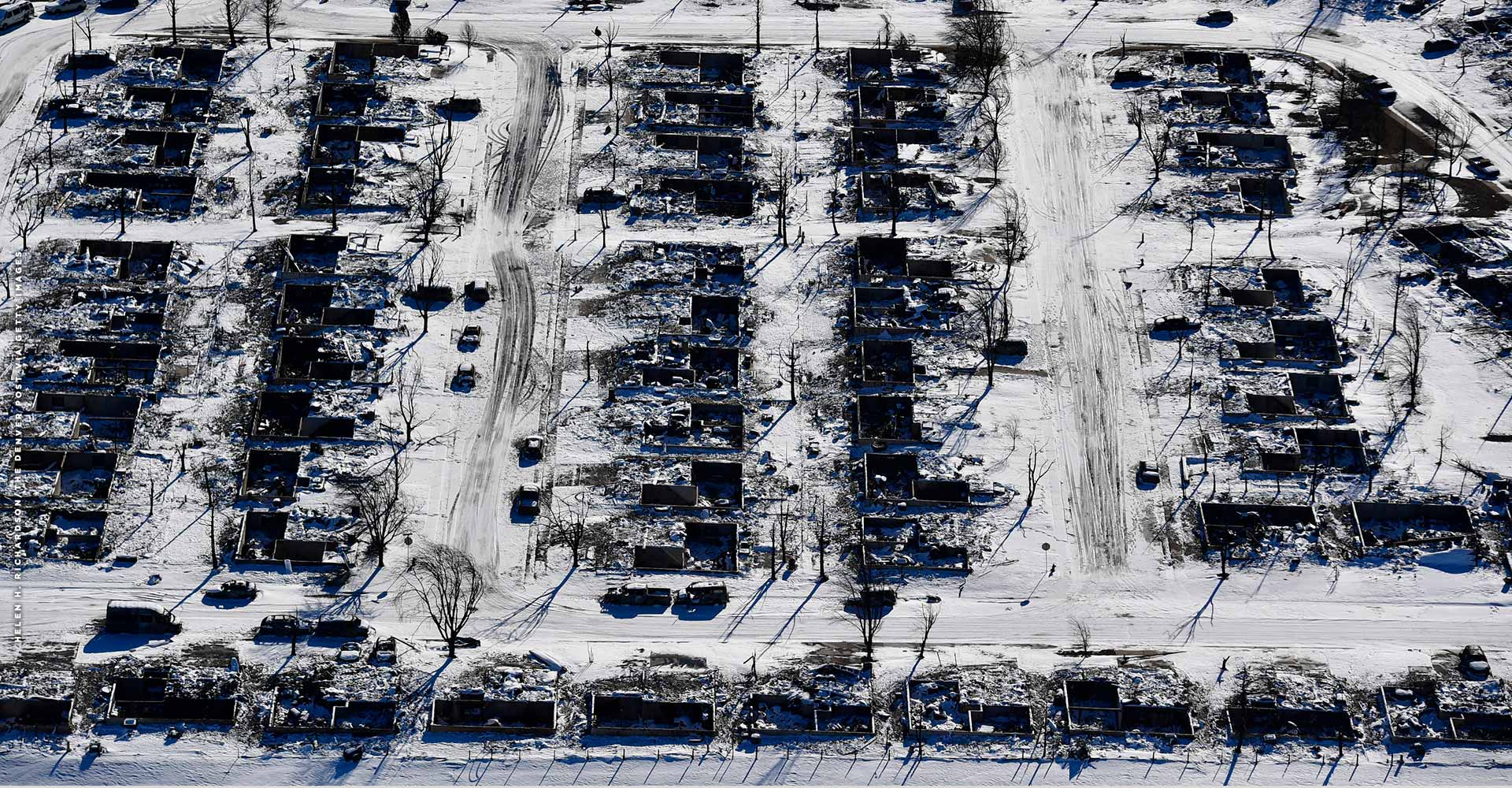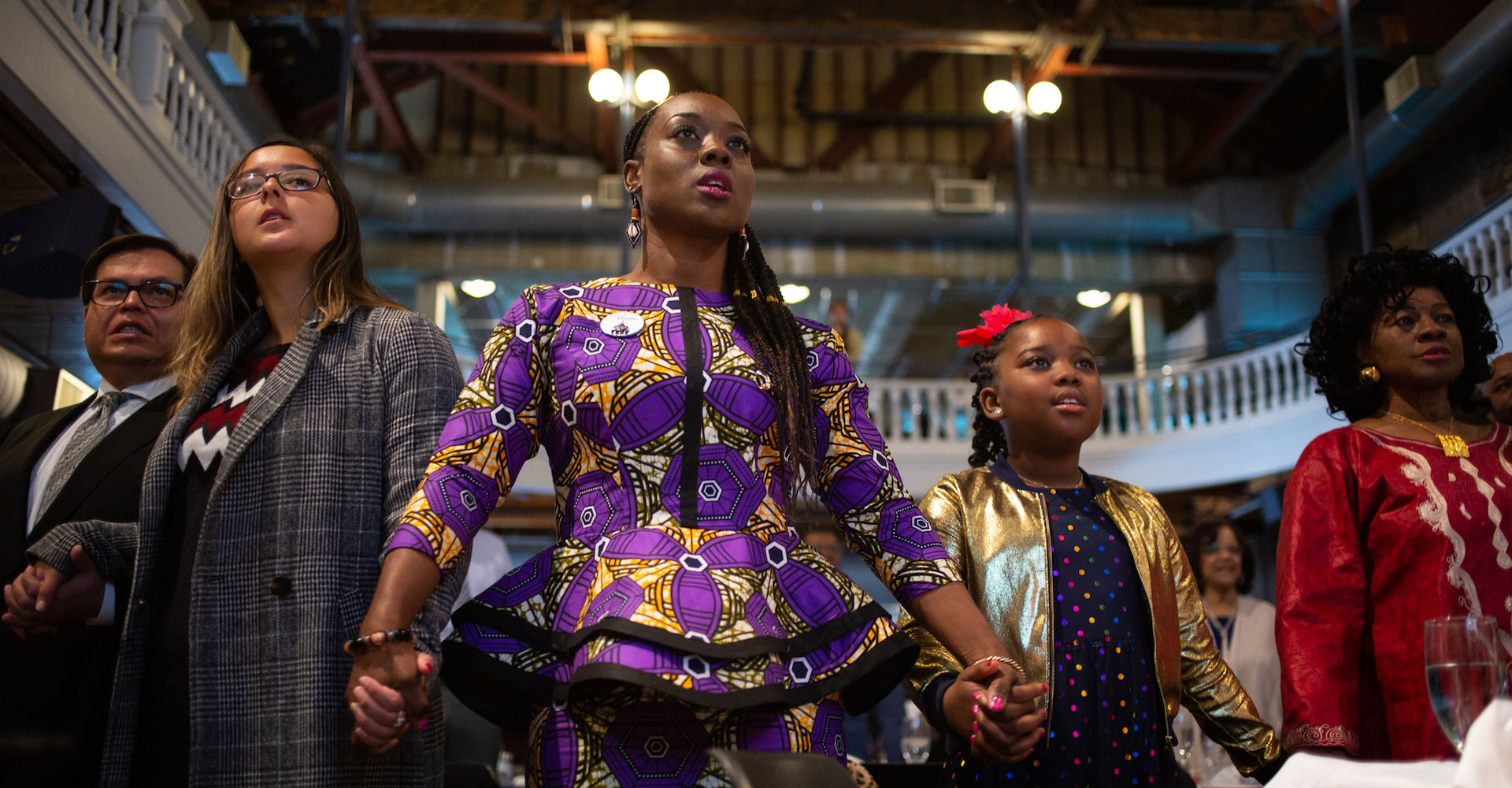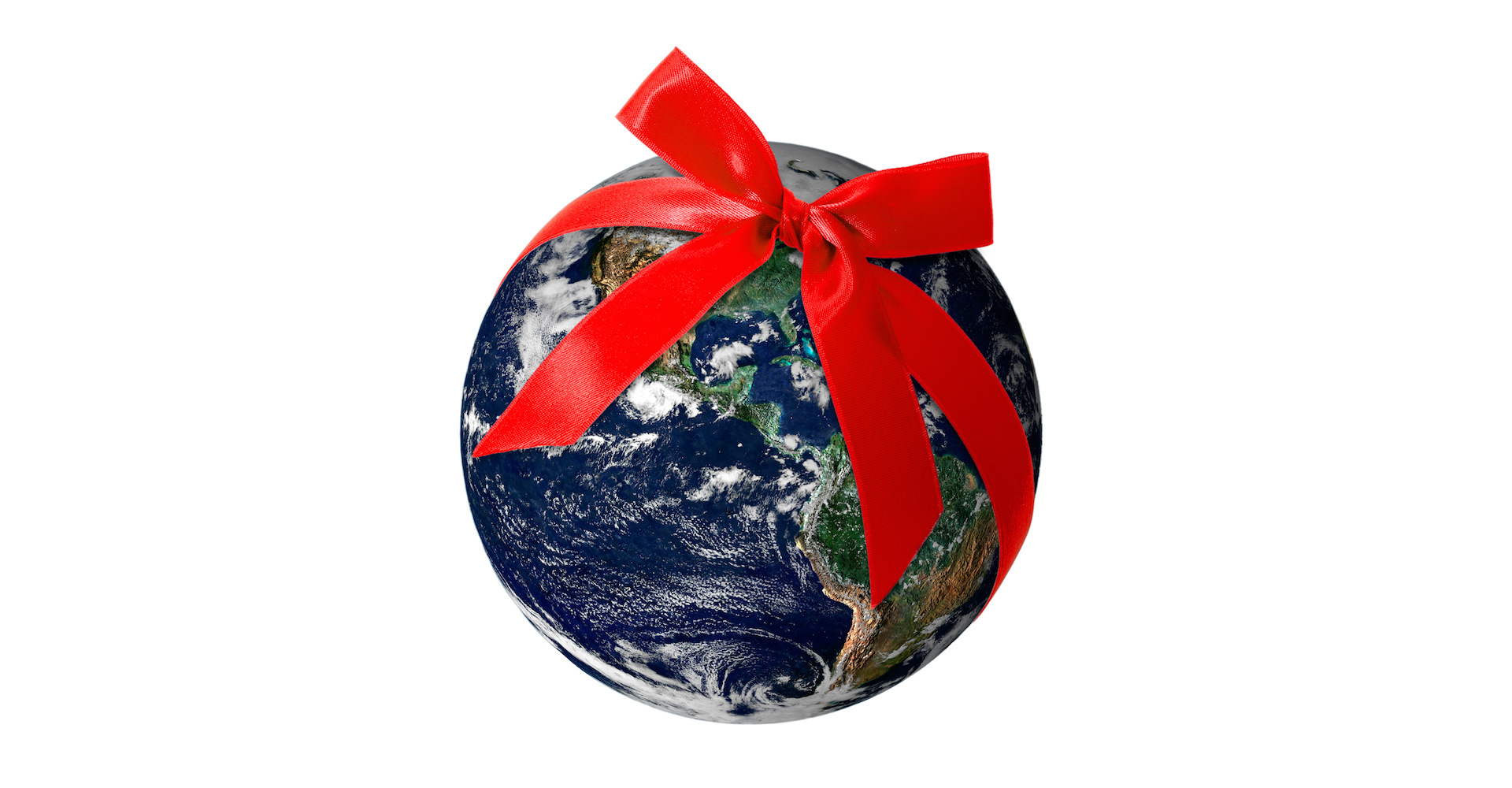Cities and suburbs face growing wildfire threat
Firefighters prepare for a combustible mix of harsh climate conditions and expanding communities.

Last month’s Marshall fire in Boulder County started small, possibly with a burning shed or underground coal fire.
But within a few hours, the rapidly moving blaze – half a mile wide and spurred on by hurricane-force winds – had raged across 6,000 acres, at one point jumping a six-lane highway, and caused apocalyptic damage. Around 1,000 homes and 100 businesses were destroyed. Many terrified residents had just minutes to flee in their cars. Altogether, 34,000 people were hurriedly evacuated as the flame-front advanced.
That only one person is confirmed dead and one missing in the fire’s wake is testament to the fire team’s expert response, which focused on swift evacuation and saving lives.
With wildland fires sparking more often, year-round and ever closer to urban and suburban neighborhoods, firefighter training is changing too.
RELATED: Career ladder
Metropolitan State University of Denver’s Fire and Emergency Response Administration bachelor’s program is one of few in the country to be officially recognized by the National Fire Academy. Scott Heiss, a former Denver Fire Division chief and an affiliate professor in the program, thinks it is needed now more than ever.
“We teach both students going into the fire service and seasoned firefighters – captains, lieutenants, even assistant chiefs – who are looking to keep up with the latest trends and maintain their professional edge,” he said.
The program addresses disaster planning, incident command and navigating the National Incident Management System, which enables agencies to work together during major emergencies.

“When facing large, fast-moving fires such as the recent one in Boulder County, the biggest challenge is always communication,” Heiss said. “In any disaster situation, it’s vital that firefighters and other agencies can all speak the same language – you really need everyone on the same page.”
Wildfires on the rise
Having a coordinated approach is especially critical in Colorado, which has a vast expanse of drought-parched, highly flammable land. Two years ago, 600,000 acres of Colorado wildland – the equivalent of 100 Marshall fires – burned across the state.
RELATED: Drought conditions fuel more wildfires
“The latest Forestry Service information suggests we’re not seeing wildfire seasons anymore but wildfire years,” Denver Fire Department Capt. Greg Pixley said.
That explains why several metro-area fire departments have recently been sending firefighters and fire engines to help tackle massive wildfires in California and other Western states. Pixley thinks more such missions will be needed and may even become routine.
“The key thing to remember is that the Marshall fire was a wildland fire, which then swiftly spread to affect an urban environment,” Pixley explained. “That’s why it acted so quickly and to such devastating effect. And sadly, it’s not unreasonable to think that something like this could happen again.”

The Calwood Fire burned more than 10,000 acres and more than two dozen structures in Boulder County in October 2020. Shutterstock photo
Risky living
Calculations of fire risk to residences are largely governed by location. And increasingly, Americans are choosing to build their homes along what’s known as the wildland-urban interface – the transition zone where woodland and dense vegetation meets human development. Between 1990 and 2010, the number of homes in interface areas grew by 41%.
Safety measures can reduce fire risk: cutting back vegetation and brush; removing nearby trees and shrubbery; using stucco rather than wood cladding on homes. Such measures have been proven to make a difference, but only up to a point.
“When you have a wildland flame-front half a mile wide being buffeted by 100-mph winds, as happened last month, then all bets are off,” Pixley warned. “Because Mother Nature will drive that fire wherever it wants to go, and no human effort will stop it.”
Next generation
What does all this look like through the eyes of a brand-new firefighter?
Jacob Stephens, who graduated from MSU Denver’s Fire and Emergency Response Administration program last year, will graduate from the Denver Fire Academy this week. He is fully aware of the challenges he’ll face in his new role at the Denver Fire Department.

Jacob Stephens, a graduate of MSU Denver’s Fire and Emergency Response Administration Program and Denver firefighter, participates in a training exercise on Jan.12, 2022. Photo by Amanda Schwengel
“The climate conditions that majorly contribute to wildfires are likely to continue – that’s not in question,” Stephens said. “Wildland fires pose a significant hazard for many of our city’s suburban neighbors, where abundant open spaces and greenbelt land surround population centers. But DFD has a long history of supporting fellow firefighters and helping surrounding areas in any way possible. And as a rookie, I’m elated to become a part of that tradition.”
Stephens’ professional goal has always been to train in wildland firefighting and eventually join the DFD’s special team of firefighters that is deployed all around the state to tackle raging wildfires.
“That way,” he said, “I know I will be there to protect Coloradans when they really need it.”




